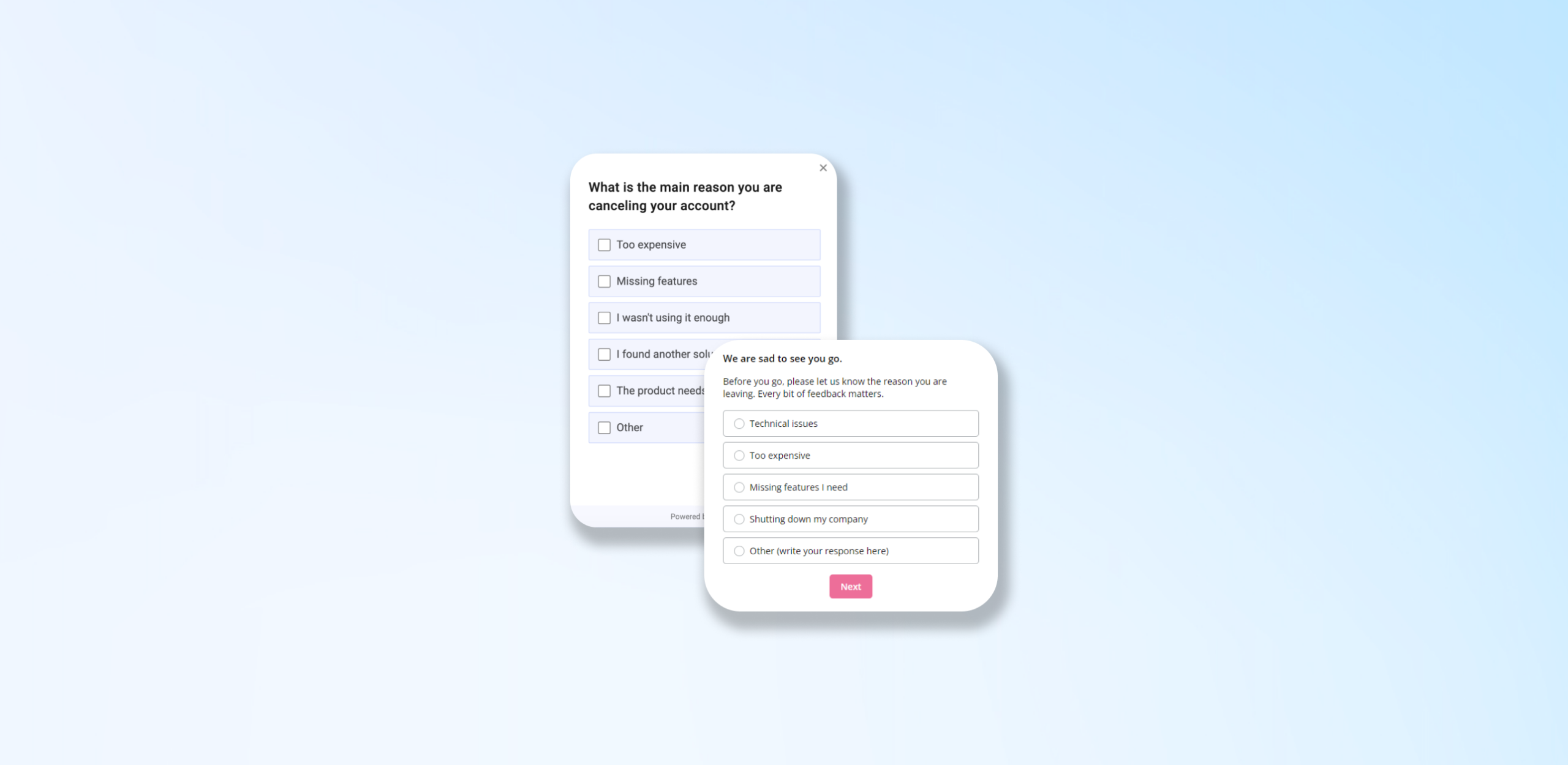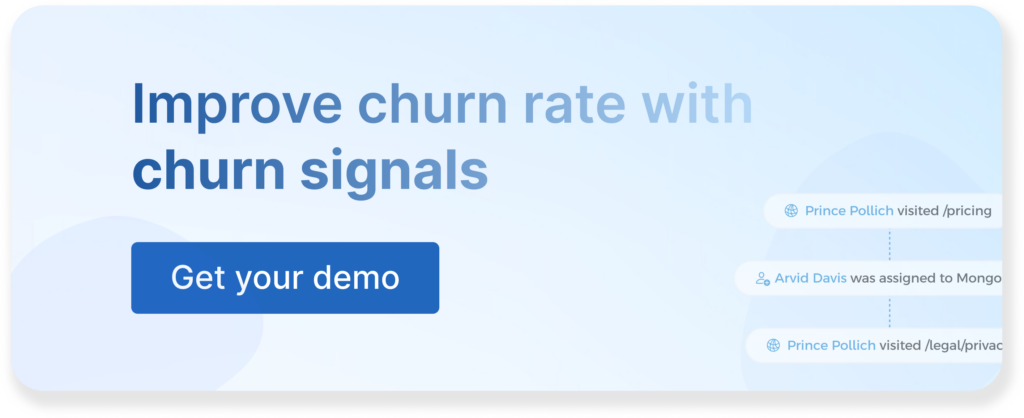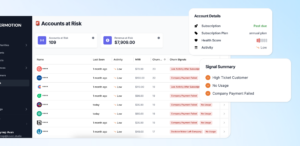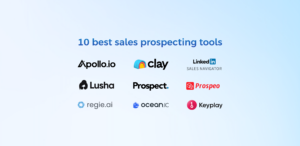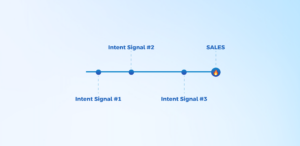Churn happens, even if you try hard to prevent it. Its normal.
In previous articles, we have talked about churn signals and churn prediction models that you can use to prevent customer churn before it happens and improve your churn rate.
However, there comes a point where you need to ask customers for feedback through what we call a customer churn survey.
Are you struggling to create an effective customer churn survey, seeing it as a last effort to prevent customers from leaving or at least use their feedback to prevent future customer churn? Here are some examples, templates and tips on how to create a good one.
Understanding Churn Surveys
Start by understanding what a churn survey is and why we really do it. By knowing its meaning and purpose, you will be able to create more meaningful strategies.
What is Churn Survey?
Churn survey (or what also called: customer churn survey, churn questionnaire, cancellation survey, etc.) refers to a series of questions sent to customers when cancelling or downgrading their subscription to understand what problems and issues caused them to stop paying.
An ideal churn survey consists of 2 or 3 questions, that are dedicated to detect the issue a customer experienced.
A churn survey not only involves asking questions to specific customers but also represents a strategic approach where all responses are collected and evaluated together to improve the product and enhance customer experience.
Why We Send Survey to Churn Customers?
We answered this question on the surface in the first section, but there is more to it than that. Why do we ask some questions to our customers who have already given up on us?
Because we haven’t given up on them and we can use the surveys in the following way:
- We can use them to identify common issues. Use churn surveys to pinpoint common problems and factors that lead customers to cancel their subscription.
- We can segment responses for targeted action. Analyze the feedback to segment customers into different categories based on their reasons for leaving.
- We can enhance customer experience. Use the insights gained from churn surveys to make informed changes that enhance the customer experience.
- We can develop retention strategies. Based on survey responses, develop targeted retention strategies to address the specific needs and preferences of customers who are at risk of churning.
- We can improve customer support. If feedback from churn surveys indicates dissatisfaction with customer support, use this information to improve your support.
- We can measure the impact of changes. Continuously monitor the effectiveness of changes implemented.
How to Create a Churn Survey?
Questions
When crafting your churn survey, keep your questions short and focused. The goal is to understand why customers are leaving without making the survey too demanding. It is not a marketing survey; it is a more related to customer success.
There are three types of questions you can use:
- Multiple-choice questions
- Open-ended questions
- Mixed questions
Multiple-choice question example
Questions:
- “Please describe any issues you experienced with our service that influenced you to leave.”
- “What is the main reason for cancelling your subscription?”
- “Why did you decide to cancel your subscription?”
- “Why are you leaving?”
Options might include:
- “High cost”
- “Lack of use”
- “Found a better alternative”
- “Unsatisfied with customer support”
- “Technical issues with the product”
Open-ended questions example
Questions:
- “Could you explain what led to your decision to cancel your subscription?”
- “What improvements or changes would have convinced you to continue our service?”
- “How could we have made your experience with our service better?”
This open-ended question allows customers to describe in detail the factors influencing their decision, providing more insights that can guide improvements.
Mixed questions example
Question #1:
- “Which feature did you feel was missing or underperforming?”
Options might include:
- “Data analytics capabilities”
- “User interface and ease of use”
- “Integration options”
- “Customer support responsiveness”
- “Other (please describe)”
Question #2:
- “What made you decide to stop using our product for your work?”
Options might include:
- “Found a cheaper alternative”
- “Service reliability issues”
- “Change in business/personal needs”
- “Dissatisfaction with the service updates”
- “Other (specify below)”
Churn Signals
Identify the warning signs that typically lead to customer churn. These signals should guide the questions in your survey to uncover specific problems customers are facing.
- If customers frequently mention poor customer support in feedback, include a question about their satisfaction with the support they received.
- If analytics show a drop in usage before cancellation, ask about the changes in their usage patterns or needs.
Let’s say you noticed a customer with a low intent data score in your UserMotion dashboard.
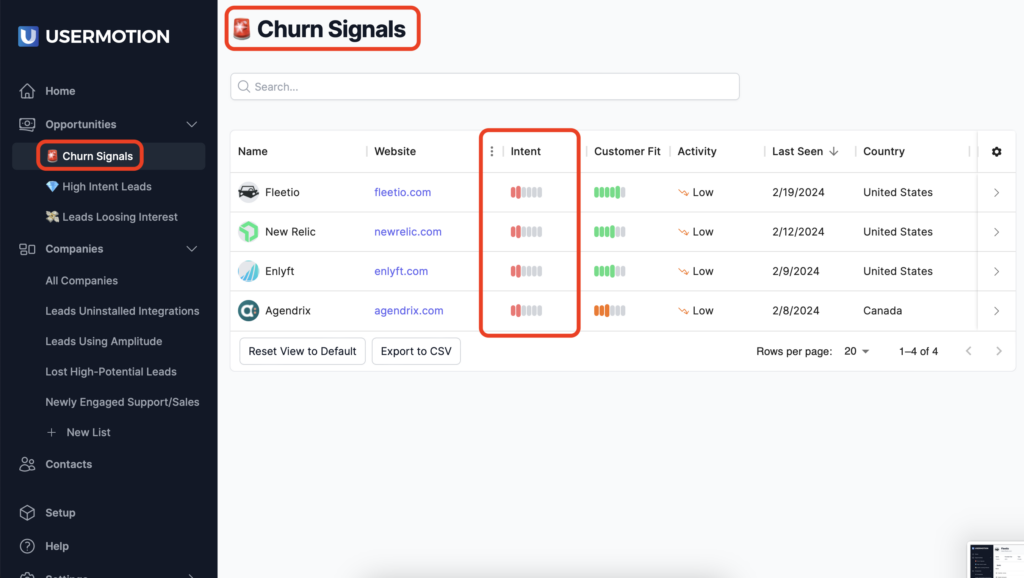
Upon reviewing their details, you observed several negative intent signals in the signal summary. You attempted to reach out but didn’t receive a response before they canceled their subscription. Perhaps they haven’t seen your messages yet.
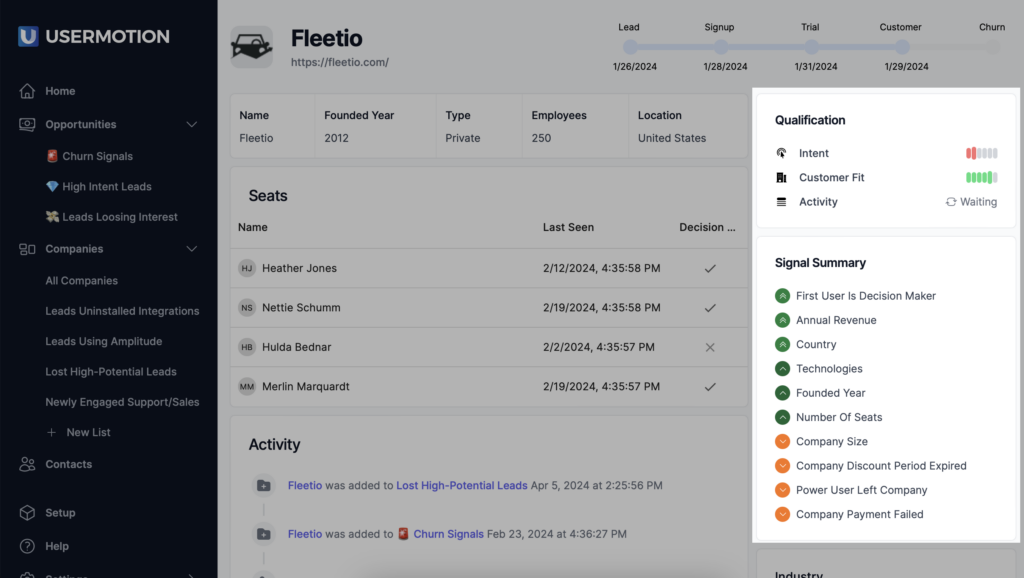
However, they will notice when they proceed to cancel their subscription, and encounter your churn survey.
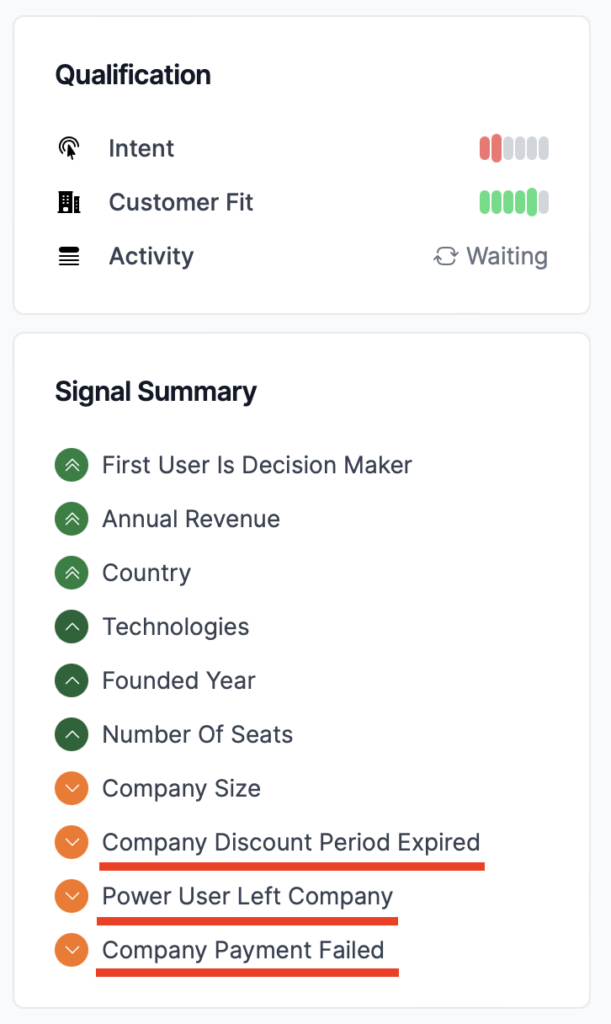
At this point, you can segment your churn signal list based on “Company Discount Period Expired” to create a personalized churn survey for the customers that meet the rule of this data.
At this point, you can send a personalized churn survey to that specific customer, noting that their discount period has ended. You can inquire if their cancellation is due to the expired discount and then offer them a new discount.
This approach allows you to use real data to make a final attempt to prevent them from churning.
Tools
Select the right tools to create and distribute your churn survey efficiently. This choice depends on your ability to integrate the tool with your existing customer data systems.
- Use survey platforms like SurveyMonkey, Refiner or Typeform for easy setup and integration.
- Consider automation tools like Userpilot to trigger surveys at the point of cancellation or account downgrading.
Analytics
After deploying your churn survey, use analytics to interpret the data collected. Look for trends and commonalities in the responses that can inform your retention strategies.
- Analyze the frequency of specific issues cited as reasons for cancellation.
- Segment the feedback by customer demographics or subscription level to customize your response strategies.
Churn Survey Templates
1. Template #1: General Churn Survey
Introduction: Sad to see you go…
Question 1: Mixed question. “Why have you decided to cancel your subscription?”
Answers:
A I wasn’t using it enough
B It was hard to use
C It was too expensive
D I found another solution
E I don’t need it any more
F Other
Question 2: Open-ended question. “What would you like to change to continue your subscription?”
Answer: Open-ended
Closure: Thanks!
2. Template #2: Discount Period Ended Survey
Introduction: We noticed your discount period has ended…
Question 1: Mixed question. “Has the end of your discount period influenced your decision to cancel?”
Answers:
- A Yes, the price is now too high
- B No, it’s not about the price
- C I wasn’t aware the discount had ended
- D Other (Please specify)
Question 2: Open-ended question. “What could we offer you to reconsider your decision?”
Answer: Open-ended
Closure: We value your feedback and would love to find a way to keep you with us.
3. Template #3: Specific Feature Lack Survey
Introduction: We’re sorry to hear our service didn’t meet all your needs…
Question 1: Mixed question. “Which missing feature influenced your decision to cancel?”
Answers:
- A Integration capabilities
- B Advanced analytics
- C More customization options
- D Better support
- E Other (Please describe)
Question 2: Open-ended question. “How critical is this feature to your daily operations, and what would it take for us to meet this need?”
Answer: Open-ended
Closure: Thank you for your input. It’s crucial for us to evolve based on user needs.
Conclusion
Churn is an inevitable part of any subscription-based business, but understanding why customers decide to leave can significantly help in developing strategies to reduce it.
Churn surveys are a crucial tool in this effort, providing the direct feedback needed to enhance product offerings, improve customer experience, and ultimately retain more customers.
By effectively using churn surveys, businesses can turn potentially negative experiences into valuable insights and opportunities for growth.
Key Takeaways
- Make churn surveys brief and focused on finding out why customers leave. This makes people more likely to respond and gives you clearer information.
- Combine multiple-choice, open-ended, and mixed questions in your surveys. This helps you collect detailed feedback about why customers are unhappy.
- Use what you learn from churn surveys to fix common problems. You might need to change your prices, improve support, or update features based on the feedback.
- Sort customers by their reasons for leaving and create responses tailored to these groups. This could help convince them to stay.
- Continuously refine your surveys using the data and feedback you collect. This helps you better meet customer needs and reduce churn over time.

